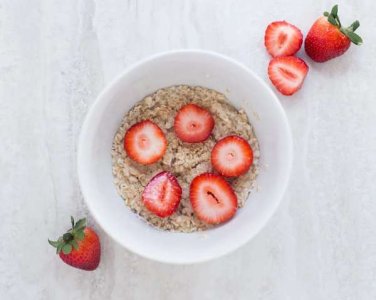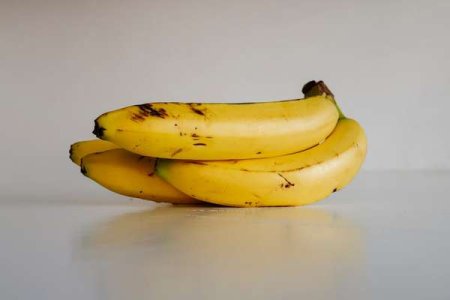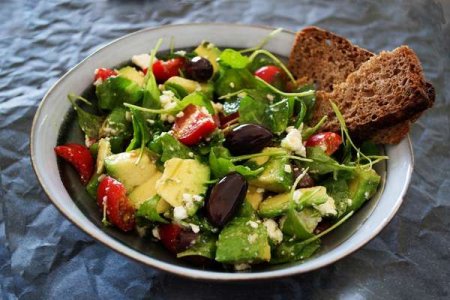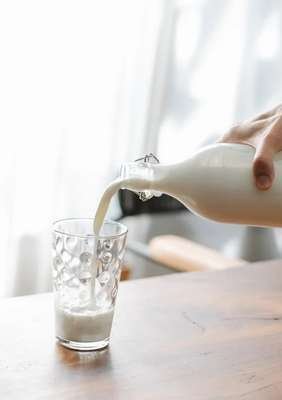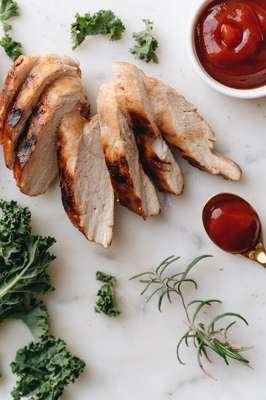Suffering from Acid Reflux or Heartburn? Discover 8 Surprising Foods That Can Ease Your Pain Instantly!
Disclaimer: The information provided in this article is for educational purposes only and is not intended as a substitute for professional medical advice, diagnosis, or treatment. Always consult your physician or other qualified healthcare providers with any questions you may have regarding a medical condition or before making any changes to your health regimen.
You’re savoring your favorite meal, and then—bam!—that familiar burning in your chest kicks in. Ouch, right? Heartburn, thanks to acid reflux, has a way of sneaking up on you. And let’s face it, it tends to happen more often as we get older. But before you reach for the antacids, here’s some good news: a few simple tweaks to what you eat can make a big difference.
From soothing snacks to meal ideas, this guide explores foods that might calm your discomfort and keep your taste buds happy.
Before we dive into the culinary solutions, let's understand the problem. Acid reflux happens when stomach acid travels back up into the esophagus, often leading to that familiar burning sensation.
The culprit? A malfunctioning lower esophageal sphincter (LES), which acts as a valve between the stomach and esophagus. When the LES doesn't close properly, acid can escape.
While medications can offer temporary relief, dietary changes can play a significant role in managing symptoms. However, it's important to remember that everyone's body reacts differently to food. Consulting with a healthcare professional or a registered dietitian can help tailor a diet plan to your specific needs.
Now, let's explore the eight foods that can help soothe your symptoms and promote better digestive health.
1. High Fiber Foods
Fiber is your friend when it comes to combating gastroesophageal reflux disease or GERD. A study in the World Journal of Gastroenterology suggests that a high-fiber diet can reduce the risk of acid reflux. Foods like oatmeal, whole-grain bread, brown rice, and quinoa, as well as green vegetables such as asparagus, broccoli, and brussels sprouts, are excellent choices.
They help you feel full, reducing the likelihood of overeating, which can exacerbate heartburn. Remember to pair fiber with plenty of fluids to keep things moving smoothly.
2. Bananas
Bananas are a real help for those dealing with acid reflux. Their low-acid content helps calm stomach acid, while the pectin (a type of fiber) supports digestion and keeps you feeling full longer. Other alkaline foods to try are melons, whole grains like wild rice and oats, cauliflower, and almonds.
3. Salad Greens
Leafy greens are not only nutritious but also naturally alkaline, making them gentle on the stomach. Research suggests that a plant-based Mediterranean diet rich in such vegetables can lead to fewer acid reflux symptoms.
Just be mindful of your salad dressing choices—opt for low-fat and avoid acidic or high-fat toppings that could trigger GERD.
4. Dairy
Milk and yogurt can provide temporary relief from heartburn by coating the esophagus and soothing irritation. These dairy products are also rich in probiotics, which support gut health and digestion. Choose skim or low-fat options to avoid the reflux that can be caused by higher fat content.
5. Ginger Tea
Ginger tea is a triple-threat against acid reflux. It's alkaline, anti-inflammatory, and can ease nausea. Drinking a cup or two daily can help calm gastroesophageal irritation and provide a soothing effect on the stomach.
6. Lean Proteins
Incorporating lean proteins like chicken, turkey, and fish into your diet can help strengthen the LES, reducing the likelihood of acid reflux. These proteins are also easier to digest, which means less work for your stomach and less chance for acid to make an unwelcome return visit.
7. Aloe Vera Juice
Aloe vera isn't just for sunburn—it's also a natural anti-inflammatory that can soothe the gastrointestinal tract. Drinking a small amount of aloe vera juice before meals can help reduce the frequency of heartburn episodes.
8. Apples
An apple a day might keep the heartburn away. Apples are a good source of fiber and can help absorb excess stomach acid. Opt for sweeter varieties, as tart apples may have more acid.
As we get older, our bodies go through a lot of changes—including our digestive system. That’s why it’s so important to pay attention to what we eat and how it makes us feel. By adding these eight foods to your diet, you can help manage acid reflux and enjoy your meals without worrying about that uncomfortable burning sensation

Have you discovered any foods that help with your acid reflux or heartburn? Maybe you’ve got a favorite recipe that’s both tasty and soothing? We’d love to hear your tips and experiences in the comments below! Let’s help each other find relief and enjoy our meals to the fullest.
You’re savoring your favorite meal, and then—bam!—that familiar burning in your chest kicks in. Ouch, right? Heartburn, thanks to acid reflux, has a way of sneaking up on you. And let’s face it, it tends to happen more often as we get older. But before you reach for the antacids, here’s some good news: a few simple tweaks to what you eat can make a big difference.
From soothing snacks to meal ideas, this guide explores foods that might calm your discomfort and keep your taste buds happy.
Before we dive into the culinary solutions, let's understand the problem. Acid reflux happens when stomach acid travels back up into the esophagus, often leading to that familiar burning sensation.
The culprit? A malfunctioning lower esophageal sphincter (LES), which acts as a valve between the stomach and esophagus. When the LES doesn't close properly, acid can escape.
While medications can offer temporary relief, dietary changes can play a significant role in managing symptoms. However, it's important to remember that everyone's body reacts differently to food. Consulting with a healthcare professional or a registered dietitian can help tailor a diet plan to your specific needs.
Now, let's explore the eight foods that can help soothe your symptoms and promote better digestive health.
1. High Fiber Foods
Fiber is your friend when it comes to combating gastroesophageal reflux disease or GERD. A study in the World Journal of Gastroenterology suggests that a high-fiber diet can reduce the risk of acid reflux. Foods like oatmeal, whole-grain bread, brown rice, and quinoa, as well as green vegetables such as asparagus, broccoli, and brussels sprouts, are excellent choices.
They help you feel full, reducing the likelihood of overeating, which can exacerbate heartburn. Remember to pair fiber with plenty of fluids to keep things moving smoothly.
2. Bananas
Bananas are a real help for those dealing with acid reflux. Their low-acid content helps calm stomach acid, while the pectin (a type of fiber) supports digestion and keeps you feeling full longer. Other alkaline foods to try are melons, whole grains like wild rice and oats, cauliflower, and almonds.
3. Salad Greens
Leafy greens are not only nutritious but also naturally alkaline, making them gentle on the stomach. Research suggests that a plant-based Mediterranean diet rich in such vegetables can lead to fewer acid reflux symptoms.
Just be mindful of your salad dressing choices—opt for low-fat and avoid acidic or high-fat toppings that could trigger GERD.
4. Dairy
Milk and yogurt can provide temporary relief from heartburn by coating the esophagus and soothing irritation. These dairy products are also rich in probiotics, which support gut health and digestion. Choose skim or low-fat options to avoid the reflux that can be caused by higher fat content.
5. Ginger Tea
Ginger tea is a triple-threat against acid reflux. It's alkaline, anti-inflammatory, and can ease nausea. Drinking a cup or two daily can help calm gastroesophageal irritation and provide a soothing effect on the stomach.
6. Lean Proteins
Incorporating lean proteins like chicken, turkey, and fish into your diet can help strengthen the LES, reducing the likelihood of acid reflux. These proteins are also easier to digest, which means less work for your stomach and less chance for acid to make an unwelcome return visit.
7. Aloe Vera Juice
Aloe vera isn't just for sunburn—it's also a natural anti-inflammatory that can soothe the gastrointestinal tract. Drinking a small amount of aloe vera juice before meals can help reduce the frequency of heartburn episodes.
8. Apples
An apple a day might keep the heartburn away. Apples are a good source of fiber and can help absorb excess stomach acid. Opt for sweeter varieties, as tart apples may have more acid.
As we get older, our bodies go through a lot of changes—including our digestive system. That’s why it’s so important to pay attention to what we eat and how it makes us feel. By adding these eight foods to your diet, you can help manage acid reflux and enjoy your meals without worrying about that uncomfortable burning sensation
Key Takeaways
- Incorporating certain foods into your diet can help alleviate symptoms of acid reflux or GERD.
- High-fiber foods, such as oatmeal, whole-grain breads, and green vegetables, can help reduce the frequency and intensity of heartburn.
- Bananas and other alkaline foods can help neutralize stomach acid and protect the esophageal lining.
- Low-fat dairy products, such as milk and yogurt, can temporarily buffer and soothe heartburn symptoms, and ginger tea has anti-inflammatory properties that may relieve gastroesophageal irritation.
Have you discovered any foods that help with your acid reflux or heartburn? Maybe you’ve got a favorite recipe that’s both tasty and soothing? We’d love to hear your tips and experiences in the comments below! Let’s help each other find relief and enjoy our meals to the fullest.


